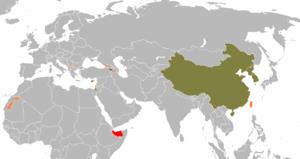Some contemporary geopolitical entities that wish to be recognised as de jure sovereign states have been hindered by a lack of diplomatic recognition. In the past, similar entities have existed, and there are now entities claiming independence, often with de facto control of their territory, with recognition ranging from almost all other recognised states to no states at all.There are two traditional doctrines that provide interpretations of when a de jure sovereign state should be recognised as a member of the international community. The "declarative" theory defines a state as a person in international law if it meets the following criteria: 1) a defined territory; 2) a permanent population; 3) a government and 4) a capacity to enter into relations with other states. According to declarative theory, an entity's statehood is independent of its recognition by other states. By contrast, the "constitutive" theory defines a state as a person of international law if it is recognised as such by another state that is already a member of the international community.Several entities reference either or both doctrines in order to legitimise their claims to statehood. There are, for example, entities which meet the declarative criteria (with de facto complete or partial control over their claimed territory, a government and a permanent population), but their statehood is not recognised by one or more other states. Non-recognition is often a result of conflicts with other countries that claim those entities as integral parts of their territory. In other cases, two or more partially recognised entities may claim the same territorial area, with each of them de facto in control of a portion of it (as have been the cases of the Republic of China and People's Republic of China, and North and South Korea). Entities that are recognised by only a minority of the world's states usually reference the declarative doctrine to legitimise their claims.In many situations, international non-recognition is influenced by the presence of a foreign military force in the territory of the presumptive, self-declaring independent entity, so to make problematic the description of the country de facto status. The international community can judge this military presence too intrusive, reducing the entity to a puppet state where effective sovereignty is retained by the foreign power. Historical cases in this sense can be seen in Japanese-led Manchukuo or German-created Slovakia and Croatia before and during World War II. In the 1996 case Loizidou vs. Turkey, the European Court of Human Rights judged Turkey for having exercised authority in the territory of Northern Cyprus.There are also entities which do not have control over any territory or do not unequivocally meet the declarative criteria for statehood but have been recognised to exist de jure as sovereign entities by at least one other state. Historically this has happened in the case of the Holy See (1870–1929), Estonia, Latvia and Lithuania (during Soviet annexation), among other cases. See list of governments in exile for unrecognised governments without control over the territory claimed.




Aipatu
0